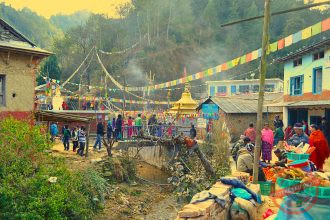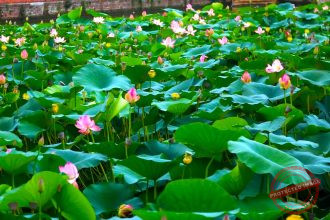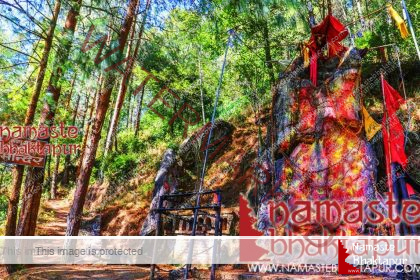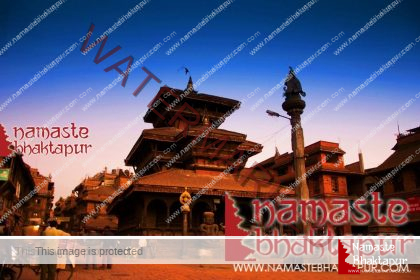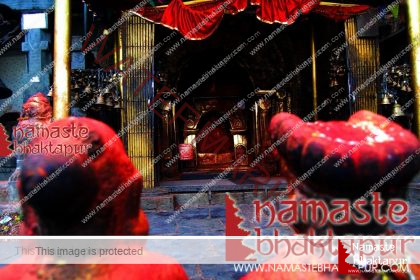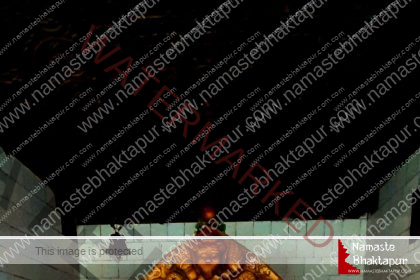The Taleju Bhawani Temple is the most important element of the Bhaktapur Durbar Square (Layaku), as well as one of the Nepali people’s most venerated temples. The Taleju Bhawani Temple is in the courtyard to the left as you enter via the Golden Gate. Inside the Taleju Bhawani Temple , only Hindus are permitted. Inside the shrine, photography is strictly prohibited. The Malla rulers’ patron Goddess is Goddess Taleju. The goddess did not belong to the Hindu pantheon of gods. She had come to the valley in the 14th century as the Malla rulers’ lineage goddess. The original Yantra (symbolic form of the Goddess) brought to the Kathmandu Valley by the refugee royal Jagatsimha– son of Devaldevi and Harisimha – is also supposed to be housed in the Bhaktapur Taleju Temple. The Goddess’s abilities are said to be contained within the yantra.

After establishing in the valley, the Malla rulers adopted many of the valley’s traditions. They gave to the temples and embraced Newari rituals and traditions, but Goddess Taleju (Tulaja Bhawani) had always been an exception. She was a mysterious being, the Malla Kings’ personal guardian and the source of their strength. A Malla King would pass on the Goddess Taleju‘s Mantra to his heir on his deathbed, effectively passing over the Goddess’s sovereignty to him.

The Goddess is reported to have always been happy with the Malla Kings. She would appear in the King’s nightmares and play chess with him while giving him solid counsel on how to rule his country. One Malla king (who was also Taleju’s favorite protégé) had sexual thoughts about the Goddess during one of these chess games. The Taleju became enraged, and she decided to flee the country. The King, recognizing his error, begged the Goddess to forgive him. Taleju Bhawani chose to return, but she declared that she would only appear before the king in the appearance of a virgin young girl from then on. This is where Nepal’s Kumari or Living Goddess, got her start.

The Taleju temple contains a number of shrines. The temple is ornately decorated, with frescoes adorning the walls. Despite the fact that Goddess Taleju (Tulaja Bhawani) is today’s cult Goddess, Nepalese revere, honor, and preserve their Goddess.

HISTORY
Monarch Harisinghdev of Simraungadh (son-in-law of Rudra Malla’s sister-in-law, the current king of Bhaktapur) died on his journey to seek safety in Bhaktapur after the invasion of Bengali Muslim monarch Gayasuddin Tughlaq in the 13th century. By Tantric laws, King Rudra Malla established his favorite Goddess Taleju Bhawani in his palace. Nayak Devi married Prince Harishchandra of Banaras (Varanasi) when King Rudra Malla died in 1326 B.C. Dewal Devi married her son Jagat Singh to the widow Nayak Devi after the conspiring assassination of Harish Chandra in January 1335 BS. Rajal Devi is the daughter of Nayak Devi and Jagat Singh. Nayaka Devi, on the other hand, died just 10 days after her daughter was born. Following the imprisonment of Jagat Singh, who was suspected of murder, Deval Devi became the state’s successor and named Rajal Devi, a young girl. Sthitidev Singh, the youngest son of King Puraditva Singh of Madesh(Tarai), was transported to Bhaktapur and confined there in 1354 BS on the location of Ashwin Shukla Navami. An 8-year-old girl was married to Rajal Devi after receiving political education. Sthitidev Singh afterwards took the surname of his in-laws and became Jayasthiti Malla of Bhaktapur. Taleju Bhawani had been appropriately established by Jayasthiti Malla.


